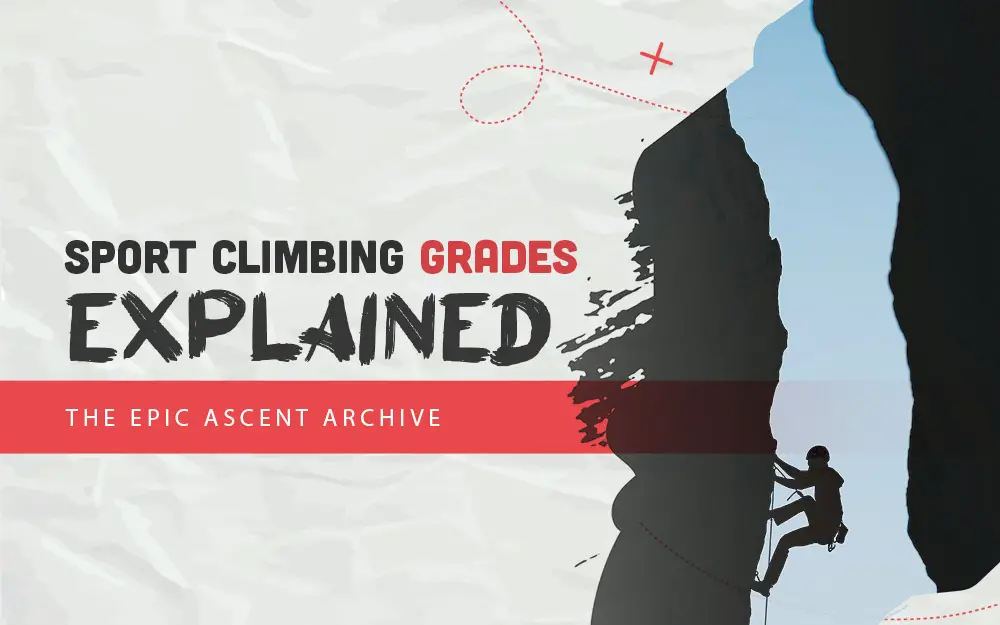Rock climbing grading systems are the heart and soul of our beloved pursuit. They serve as our tool to gauge and celebrate our climbing milestones, and they form the dialect when expressing our personal verdicts on how challenging a particular ascent or boulder conundrum feels.
But the role of climbing grades stretches beyond mere progress tracking. A route beyond your skill level can be more than just frustrating—it can be hazardous. Some rock climbing rating scales, such as UK trad climbing, go the extra mile by incorporating a general safety indicator for routes that are tricky to protect or pose inherent risks.
As a fledgling rock climber, the deluge of numbers, letters, dots, and dashes might seem intimidating, if not downright baffling. With a plethora of grading systems that vary based on climbing discipline and geographical location, it’s easy to feel lost.
Below, I explain everything you need to know about climbing grades. (This article is dedicated to sport/trad grades, to find out about bouldering grades, take a look here)
As you read this article, remember that all grades are subjective!
Climbing Grades Comparison Chart
To help you navigate through the convoluted world of climbing grades, we have put together a climbing grade conversion chart. This will help you compare and convert across some of the most popular grading systems.

What Does The Climbing Grading System Tell Us?
The idea that the experience you may have on a piece of rock can somehow be translated into a couple of numbers is a pretty crazy concept. But as you might have already found out, it’s not always that simple. Grades give us a general idea of the difficulty of a route, established through consensus over time relative to other climbs.
Climbers all have different strengths, weaknesses, and movement styles. Because of this, you may find the lower grade of two routes to be harder simply because it doesn’t suit your climbing style. On top of this, different climbing areas will have different standards, even within the same grading system.
For example, old-school areas, like Yosemite, typically have sandbagged grades. When 5.9 was the highest climbing grade, the standard for what qualified as one was much higher. These grades are usually preserved out of respect for the history and developers. So just because you can climb a certain grade in Red Rock doesn’t necessarily mean you’ll be able to climb the same in Joshua Tree.
Climbing Grading Systems
Climbing grading systems can vary considerably from country to country, reflecting the unique aspects of climbing in different geographical regions. Among the multitude of grading systems globally, the most popular ones have their origins in the United States and France.
The American Yosemite Decimal System (YDS) and the French climbing grades are widely recognized and used, offering a benchmark for climbers across the world to measure their skills and climb difficulty. These systems, despite their differences, share the goal of providing a standardized understanding of climb difficulty, helping climbers make informed decisions and progress in their climbing journey.
American Climbing Grading Systems
Now let’s dissect the rock climbing grades themselves, so you know what you’re looking at next time you open a guidebook or Mountain Project.
Yosemite Decimal System
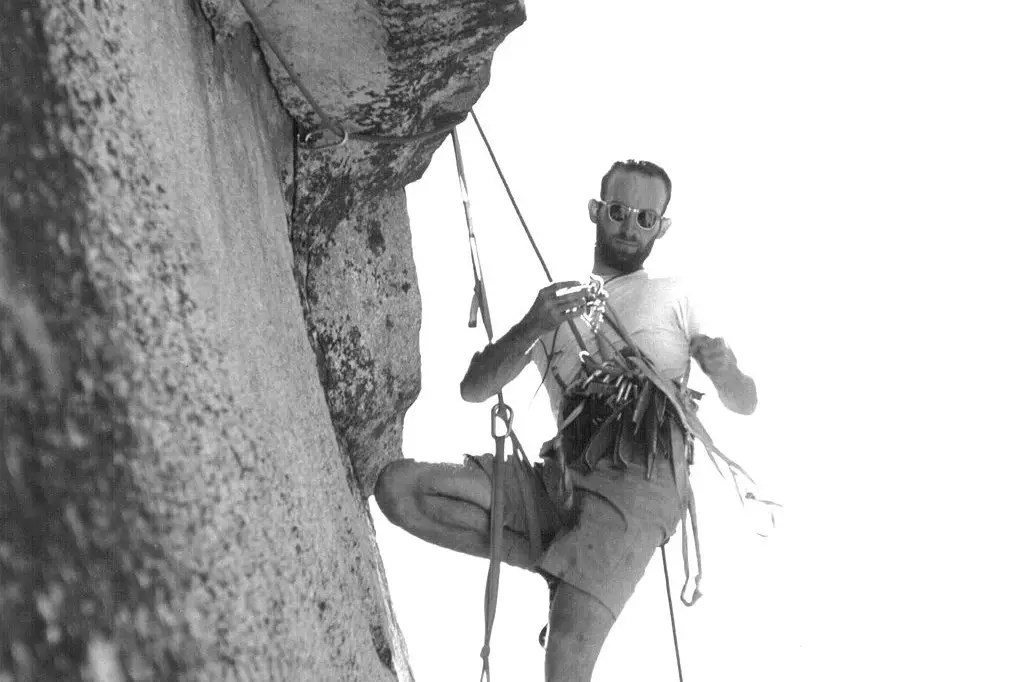
The Yosemite climbing scale was developed by Royal Robbins, Don Wilson, and Chuck Wilts in Southern California in the early 1950s. Originally known as the Southern California or Wilts-Sierra system, it eventually became cemented as the Yosemite Decimal System, despite its inception outside of Yosemite.
The Yosemite Decimal System is the most commonly used grading system for sport, trad, and multi-pitch climbing in the United States. A grade in this system will always contain two numbers and sometimes a letter. In climbing, the first number is always 5. This means that the route is in fifth-class terrain. This designation marks the transition from steep hiking or scrambling (class 4 or lower) into earnest rock climbing, requiring hands and feet in near vertical or steeper terrain.
The second number will be anywhere from 0 to 15. This number is the primary difficulty marker of the climb. Many different factors can make a climb difficult, like the size of the holds, the space between them, and the angle of the wall. It is impossible to fully generalize this, and it will vary between areas and disciplines, but to get a rough idea of the ranges here, look at the following bullet points.
- 5.0-5.8: Beginner
- 5.9-5.10: Intermediate
- 5.11-5.12: Advanced
- 5.13-5.14: Expert
- 5.15: Jedi
Once you get to 5.10 there will also usually be a letter from A to D at the end of the grade. At this difficulty and above, the gap between the number grades gets more significant, so a letter is added to show where a climb lies within the grade. For example, 5.11a is easier than a 5.11b and 5.11d is the hardest of all the 5.11 grades.
As you get higher in grades, it becomes more challenging and time-consuming to level up, and the gap between letters and numbers feels more significant. It may only take a few months for a climber to work their way from 5.10a to 5.10d, whereas going from 5.13a to 5.13b may be a multiyear endeavor.
Safety Ratings
In certain cases, there may also be an additional safety rating next to the grade. This is typically present if a climb has additional factors that make it dangerous. If you’ve ever gone to the movies you’ll pick up on these pretty quickly.
- PG-13: More risky than normal. A fall in certain sections of the climb may result in injury.
- R: A fall in one or more sections of the route could result in serious injury or death
- X: Don’t fall…
Quality Ratings
Guidebooks will usually have a quality rating that accompanies the climbing grade. This is usually established through consensus over time and is there to show how good the climb is. Obviously, this is a subjective decision, but it is usually based on factors like smooth movement, quality stone, historical significance, and aesthetics. This depends on the guidebook, but the ones that I use will have a three-star rating on the best climbs.
Aid Ratings
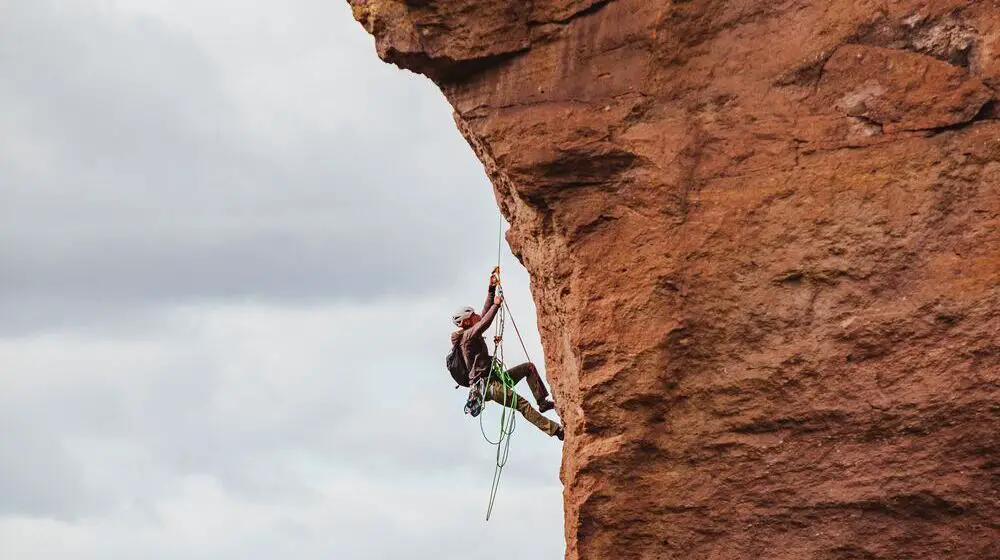
If the climb involves aid climbing (using ropes and gear to ascend rather than solely hands and feet on the rock) there will be an additional aid rating. This is a number from A0 to A5 or C1 to C5 that signifies the difficulty/complexity and [primarily] danger of the pitch. The climb will get an A rating if it requires the use of a hammer and a C rating if not. A route that is A5 or C5 basically implies certain death in the case of a fall.
V Scale
The V or Vermin Scale is the primary system used to grade boulders in the United States. It was developed by John Sherman, nicknamed Verm, who is famous for developing the discipline of bouldering in the United States. It evolved naturally, through years of developing boulders in Hueco Tanks, Texas until a publisher asked Sherman to formalize the system. The V scale starts with V0 as the easiest and currently caps out at V17.
- V0-V3: Beginner
- V4-V6: Intermediate
- V7-9: Advanced
- V10-V13: Expert
- V14-V16: Jedi
- V17: Probably not human
European Climbing Grades Explained
As mentioned previously, different countries will use different systems of grading. Most of these systems look different at the surface level but are pretty much the same at the core. If you are familiar with the Yosemite Decimal System and V Scale and are climbing in different countries or reading about international climbers, you will have to do some conversion to “bring the grade home”.
French Grading System
The French system of grading sport climbs is used in many different parts of the world and pretty much all throughout Europe. Just like the Yosemite Decimal system it uses a combination of numbers and letters to show difficulty. Refer to the climbing grades chart for a comparison.
Fontainebleau System
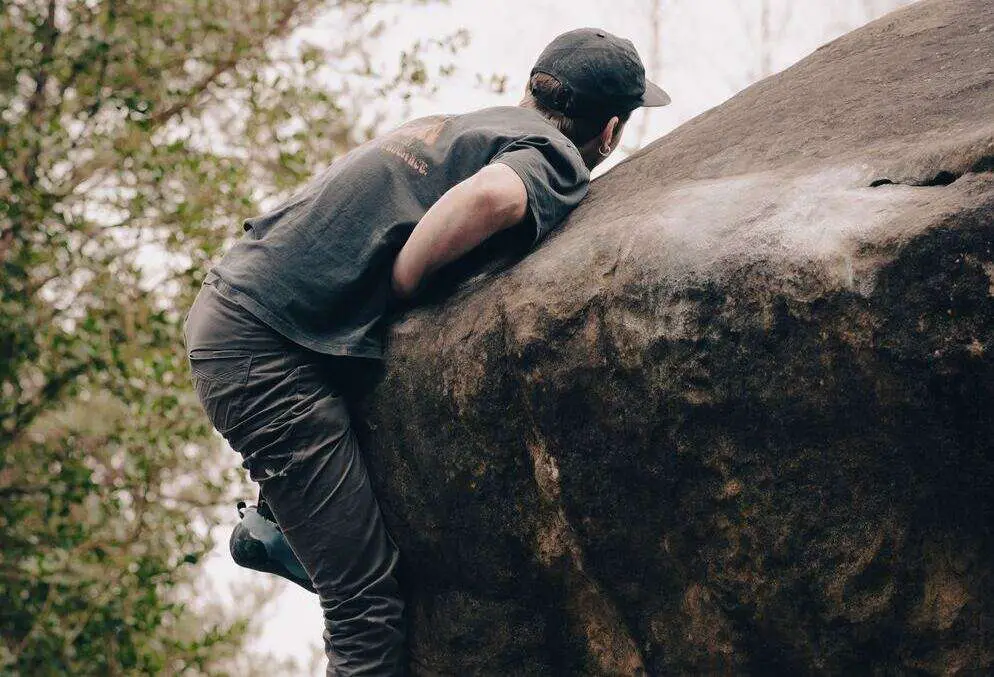
The Fontainebleau System is also used widely throughout Europe along with various other countries to classify bouldering grades. It looks pretty similar to the French Sport Climbing System, however, the numbers translate to bouldering rather than sport climbing. As you may have guessed this system was developed in Fontainebleau France, one of the most revered bouldering areas in the world. We’ve dedicated a whole page on bouldering grades, so if you want to find out more, take a look here.
British Climbing Grades for Trad
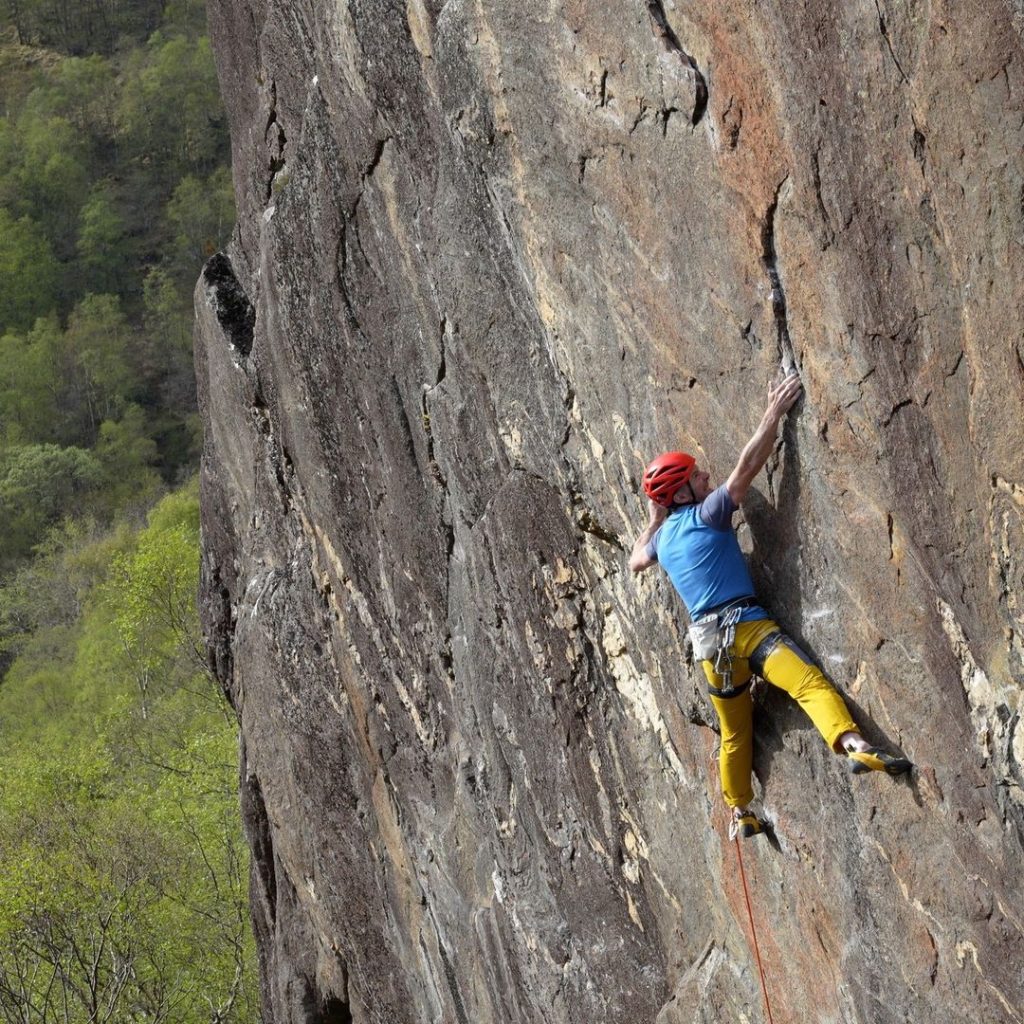
Out of all the rock climbing grades, the British climbing grading system for trad has given me a headache or two as it’s definitely one of the harder systems to wrap your head around. You may remember from the section on the Yosemite Decimal System that climbs in the United States will have a difficulty rating and then, if necessary, a second danger rating.
The British trad climbing grades sort of combines these into one all-encompassing grade that theoretically should show the overall difficulty of a route as well as a difficult section on the route. According to Pete Whittaker, British trad climbing grades encompass much more than just the difficulty and the danger. He explains in a video that it includes everything from the type of rock, the difficulty of the approach, the weather than day etc.
There are two parts to the British climbing grades. The first part is an adjectival grade ranging from:
- Moderate (M)
- Difficult (D)
- Hard Difficult (HD)
- Very Difficult (VD)
- Hard Very Difficult (HVD)
- Severe (S)
- Hard Severe (HS)
- Hard Very Severe (HVS)
- Extremely Severe (E1-E12)
The adjectival grade indicates the overall difficulty and seriousness of the climb. It all comes down to how hard or easy it is to place gear. A wide crack going all the way up the wall with an abundance of gear placements might be graded a D, for example. If the route is overhung, with huge gaps between gear placement or the cracks are small, it might be graded HVS or an E grade. When you get to the E grade, the scale indicates that yes it is a difficult route, but the 1-12 range indicates how much gear can be placed. An E1 climb will have a great amount of gear placements, but an E11 will have very limited gear.
Still with me? Good because we haven’t finished yet.
Next, you have the technical grades. These grades give you an indication of how hard the hardest move in the route is. These grades range from:
- 4a,b,c
- 5a,b,c
- 6a,b,c
- 7a,b (open-ended)
This climbing grading system is not to be confused with the French system. They have a similar format but that is it. They are not to be used interchangeably.
To get the overall grade of a route, you combine the adjectival grade with the technical scale. So, a climb could be a VD 5a, or an E2 6b. The E2 suggests that it’s not that high in terms of seriousness but the 6b climb might make it a very challenging route.
What makes this system unique, as you can see, is that you may find two routes which are both, let’s say, E6. One of these may have significantly more difficult moves and be graded a 4a technical grade, and the other a 6b. Both warrant the grade, however, one earns it from its risk factor and one earns it from the difficulty factor. This system works well in the UK due to the abundance of sketchy trad climbs.
British climbing grades can be difficult to wrap your head around, but once you know them, it’s pretty easy. But just incase I didn’t explain it very well, take a look at the professionals talking about it.
Australian Climbing Grades Explained
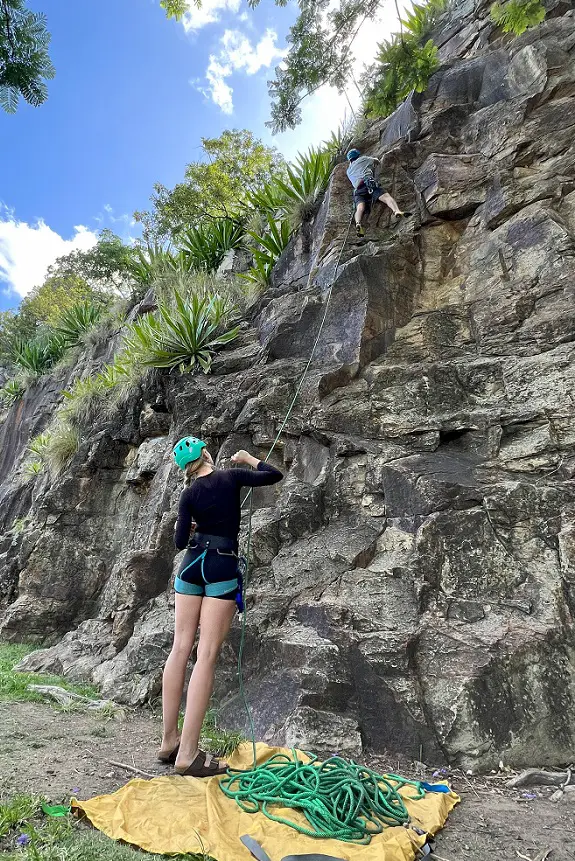
Did you think we were done? Nope, there is more! Just to confuse you even further, our friends down under also have their own rock climbing grades for sport. In climbing guides or grade conversions, you might see it as the ‘Ewbank’ grading system.
It’s a fairly simple climbing grading system they use without any pluses or letters. Just a scale from 1 to 39. 1 being the most beginner route (basically a walk up an inclined hill) and 39 being the hardest. As you go up a grade in the Aussie climbing grades the holds get smaller and more scarce.
They also use a similar climbing grading system in New Zealand and South Africa. In SA, instead of 1 to 39, the climbing scale goes up to 40.
- 1-12: Beginner
- 13-18: Intermediate
- 19-24: Advanced
- 25-32: Impressive
- 33-39/40: Are You Even Human?
Other Climbing Difficulty Levels
UIAA Climbing Grades
The UIAA climbing grading system is the modernized version of the very first grading system introduced in 1894 by Austrian mountaineer Fritz Benesch. The Benesch scale used Roman numerals and ranged between level I to VII, with the latter being the hardest. It was later adapted and known as the Welzenbach scale.
In 1968 it took the very catchy name of Union Internationale des Associations d’Alpinisme (UIAA for short) and has become an international grading system. The climbing scale has remained almost the same but with additional grades added as more and more climbers broke the barriers of hard climbing.
Originally a 6 grade scale from I to VI, the scale is now left open-ended.
- I (+/-): An easy scramble
- II (+/-): You’re a real rock climber now
- III (+/-): Steep and vertical but still doable
- IV (+/-): Spaced out holds but still doable
- V (+/-): Where are the holds at?
- VI (+/-): No, seriously, where are they?
- VII(+/-): Okay, this is seriously difficult
- VIII~ :To infinity and beyond
Scandanavian Grading System
Finland, Norway and Sweden have their own systems as well. They initially adopted the UIAA climbing grading system but now their grading system looks very similar to the French system. It doesn’t include any letters, just plus or minus and goes from a scale of 1- to 12+.
They use this grading system for sport climbing and trad. The gap between each grade is really wide, so there is a lot of variation in the same grade.
Indoor Climbing Grades
Indoor climbing grades tend to follow the same grading system as the country that gym is it. However, you will find that most indoor rock climbing levels use the French sport climbing grades. For example, if you go to the gym in the UK, most of Europe and Asia, you’ll find French climbing grades.
If you go to the USA, you’ll find the YDS and in Australia you’ll find the aussie way. It really just depends on where you are. You’ll also find some gyms using color grading systems, where white might be the easiest route and black the hardest.
Chasing Grades
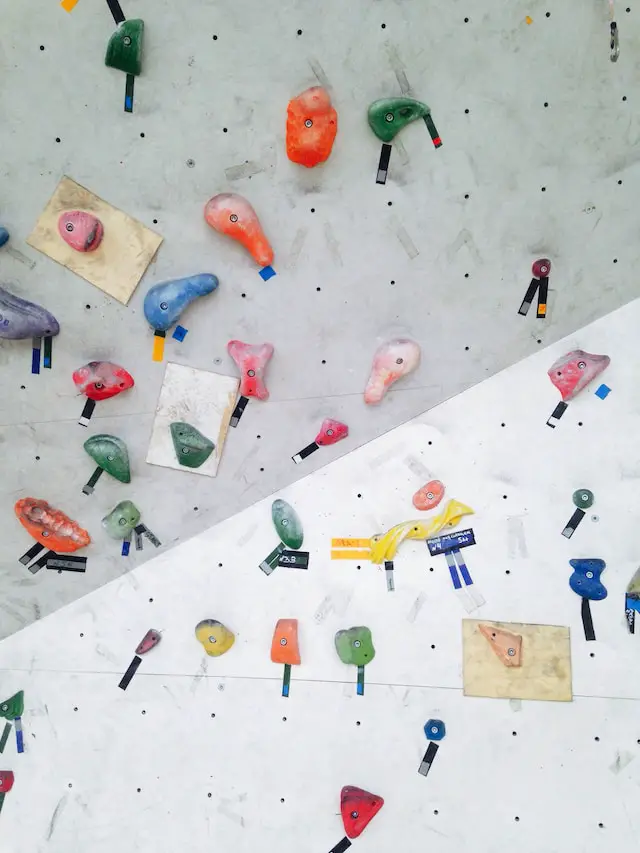
As you can see, there are so many different climbing grades that are used out there. And that’s not even it. There is a Russian grading system, Polish, Saxon for sport climbing and a P,S and B scale for bouldering. The scales that you will most likely come across and use is the French, YDS, Font, and V scale. If you do trad, you will most likely come across the Britsh trad scale.
How much significance you give to climbing certain grades is up to you as a climber. Some will spend their whole careers focusing on pushing it to the next level of difficulty while others may opt for a mentality of focusing on the quality and beauty of climbs rather than the “grades”. This all hinges on your personal climbing philosophy and what you value in the sport. The beauty of it is, there is no right answer. And remember, climbing grades have been set by people. It is all subjective. A dyno problem graded a V6 could be easy for a 6ft2 climber with a plus 4 ape index compared to someone who is more vertically challenged.
Whichever way you use grades to guide your experience, remember, it’s all just climbing. Don’t get so caught up in the numbers that you stop enjoying the sport. Hopefully, by now you have a solid understanding of the different systems of grading and what they tell you. Open your guidebook with confidence and get after it!
Climbing Grades FAQs



